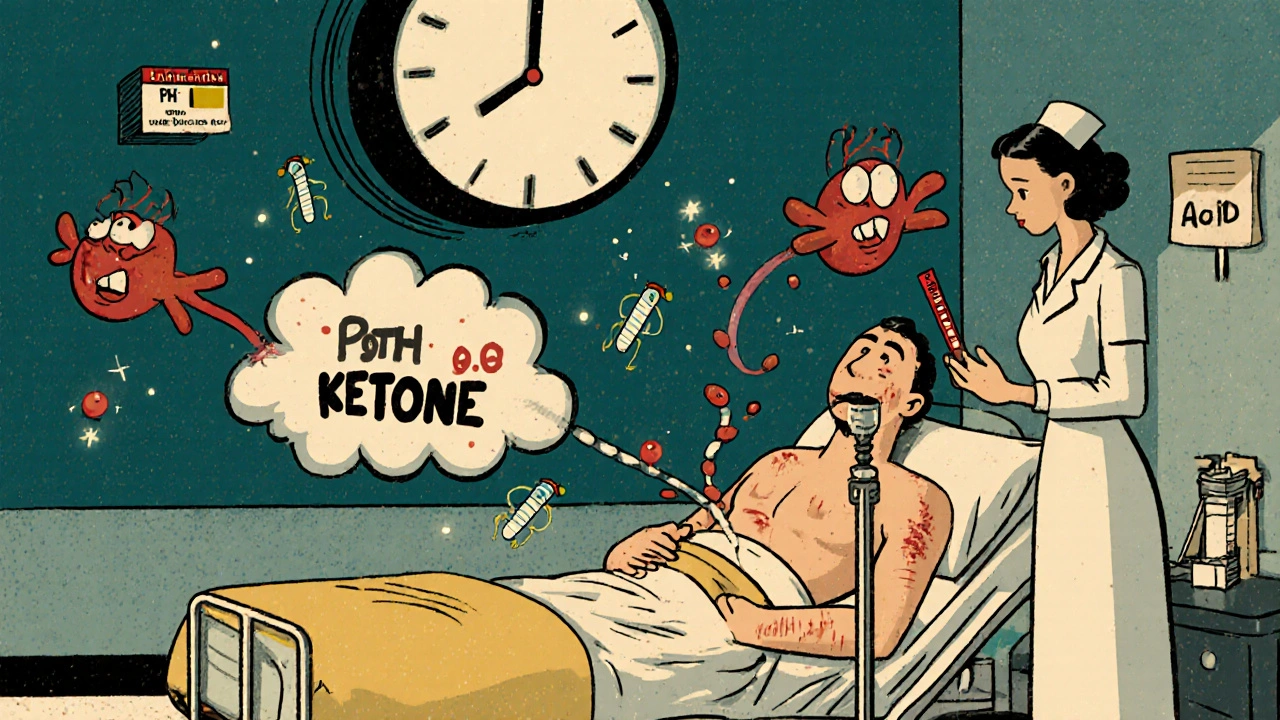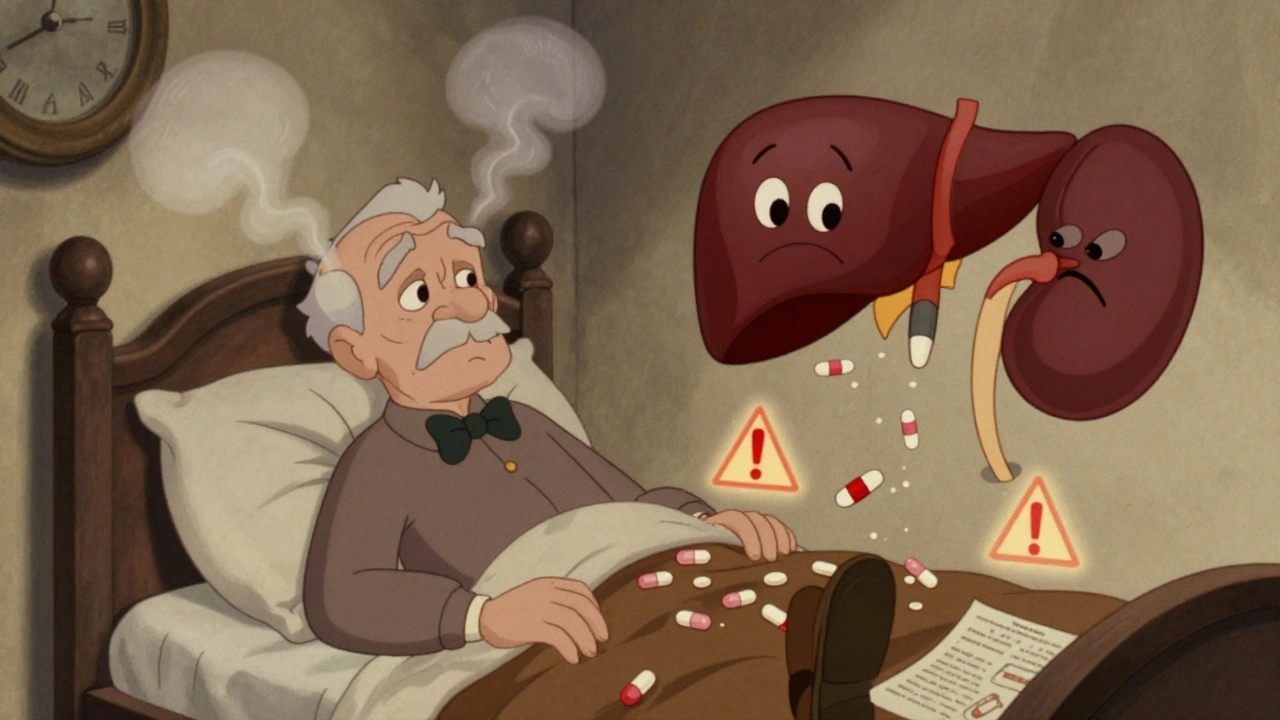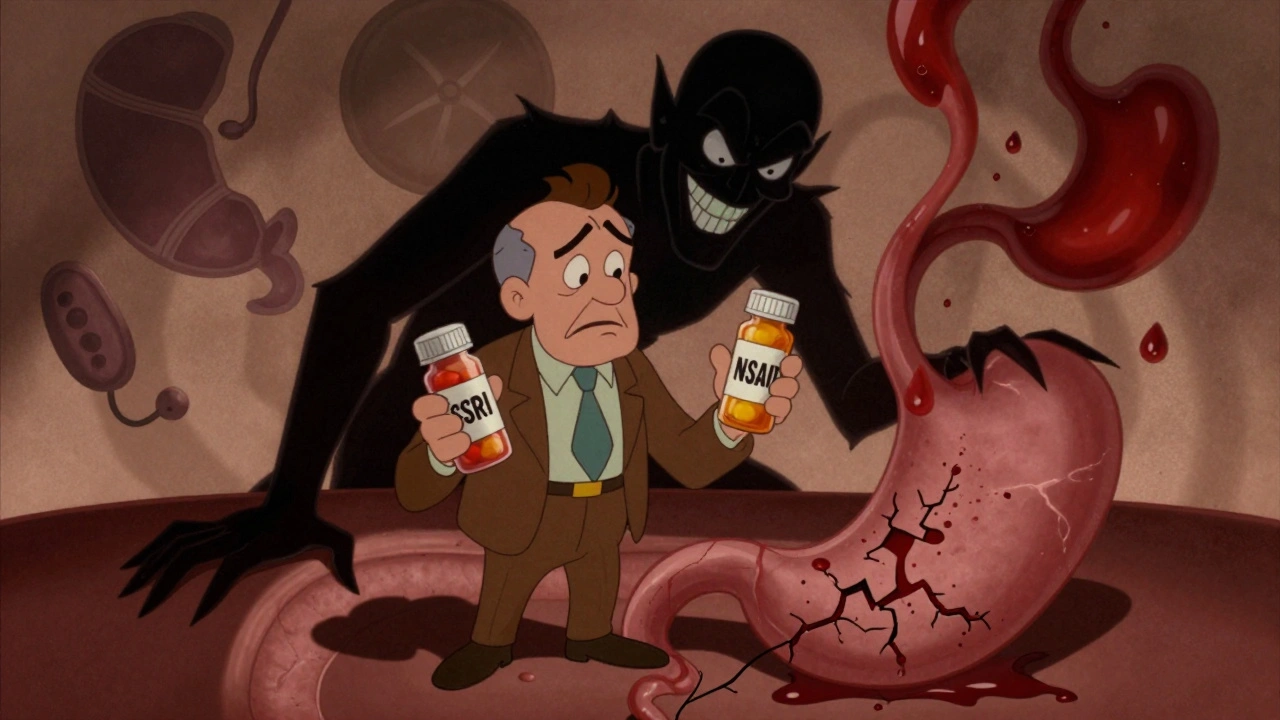Diabetic ketoacidosis, or DKA, is not just a complication of diabetes-it’s a medical emergency that can kill within hours if ignored. You might think it only happens to people who forget their insulin, but that’s not the whole story. DKA can strike someone who’s never been diagnosed with diabetes before, or someone who’s been managing their condition for years. It doesn’t care how careful you are. What it does care about is insulin levels dropping too low, and your body being forced to burn fat instead of sugar. That process floods your blood with toxic acids called ketones. And when those build up, your blood turns acidic. That’s when your organs start shutting down.
What Does DKA Feel Like? The Warning Signs You Can’t Afford to Miss
DKA doesn’t come with a siren. It creeps in slowly, then hits hard. The first signs are easy to brush off. You’re thirsty-really thirsty. You’re peeing every hour, even at night. Your mouth feels like cotton. You might think you’re just dehydrated from the heat, or that you drank too much coffee. But if your blood sugar is over 250 mg/dL and you’re drinking 4 to 6 liters of water a day, that’s not normal. That’s your body screaming for help.
Within 12 to 24 hours, things get worse. Nausea hits. Then vomiting. You might feel like you have the flu, or food poisoning. But there’s no diarrhea, no fever-just this deep, unrelenting fatigue. You can’t get out of bed. Your muscles feel weak. Your grip is weaker. You can’t hold a coffee cup steady. That’s not laziness. That’s your body running out of fuel and drowning in acid.
Then comes the breath. People describe it as fruity, like nail polish remover or overripe apples. Clinicians know it immediately. It’s the smell of acetone, a ketone your liver is spitting out. It’s not something you can ignore if you’ve smelled it before. If you haven’t, you’ll notice it when someone else points it out.
By this point, your breathing changes. It becomes deep and fast-like you’re trying to gasp your way out of a vacuum. That’s Kussmaul breathing. Your body is trying to blow off acid through your lungs. It’s a last-ditch effort to survive. If you’re confused, disoriented, or struggling to stay awake, you’re in critical condition. Your brain is being poisoned by the same acid that’s wrecking your kidneys and heart.
And here’s the twist: not everyone with DKA has high blood sugar. About 1 in 10 cases are called "euglycemic DKA"-where glucose is under 250 mg/dL. This is common in people taking SGLT2 inhibitors (like Farxiga or Jardiance) or in those with type 1 diabetes who’ve been rationing insulin due to cost. If you’re on one of these drugs and feel sick, don’t wait for your sugar to spike. Check your ketones.
How Hospitals Treat DKA: The Science Behind the Save
Once you’re in the ER, time becomes the most important factor. Every hour you wait increases your risk of death by 15%. The goal isn’t just to lower your blood sugar-it’s to reverse the acidosis, fix your electrolytes, and stop the ketone flood before your brain swells or your heart stops.
The first thing they do is fluids. You get 1 to 1.5 liters of saline through an IV in the first hour. That’s not just hydration-it’s flushing out the toxins and restoring blood pressure. After that, fluids slow down to 250 to 500 mL per hour. Too much too fast? That can cause brain swelling, especially in kids. That’s why doctors are so careful.
Then comes insulin. Not a shot. Not a pump. A continuous drip. They give you a small IV bolus, then keep it going at a steady rate-usually 0.1 unit per kilogram of body weight per hour. Your blood sugar should drop 50 to 75 mg/dL every hour. Faster than that? Risk of brain swelling. Slower? The ketones keep coming.
Electrolytes are the silent killers. Even if your blood test shows normal potassium, you’re likely dangerously low inside your cells. Insulin pushes potassium into cells, so your serum level can drop fast. That’s why hospitals start potassium replacement as soon as your level is under 5.2 mmol/L. You’ll get 20 to 30 mEq per hour, sometimes more. Same with sodium and phosphate. These aren’t optional. Skip them, and you risk heart arrhythmias or seizures.
Bicarbonate? Rarely used. Only if your pH drops below 6.9. Most hospitals still give it out of habit, but studies show it doesn’t help-and can even hurt. The American Diabetes Association says it’s not needed in 95% of cases. Yet, 22% of U.S. hospitals still use outdated protocols. That’s why knowing the right treatment matters.
Doctors aren’t just treating DKA. They’re treating the trigger. Half the time, it’s an infection-pneumonia, UTI, flu. One in three is because insulin was missed. One in five is a first-time diagnosis. You can’t fix the acidosis if you don’t fix the cause. Antibiotics. New insulin plan. Education. All part of the treatment.

What Happens After You’re Stable?
Stabilizing doesn’t mean you’re done. You’ll stay in the hospital for 2.5 to 4 days, on average. Your discharge isn’t just when your sugar is normal. It’s when your blood ketones are under 0.6 mmol/L, your bicarbonate is above 18 mmol/L, and your pH is back above 7.3-on two consecutive checks. If you’re sent home too early, 12% of people end up back in the hospital within 72 hours.
Before you leave, you’ll get a full plan: how to check ketones, when to call your doctor, how to adjust insulin during illness, and what to do if your pump fails. If you’re on an insulin pump, you’ll be told to switch to injections when you’re sick. Pump failures cause 35% of DKA cases in pump users. That’s not a glitch-it’s a safety blind spot.
Technology is changing the game. People using continuous glucose monitors (CGMs) with ketone alerts-like the Dexcom G7-cut their DKA risk by 76%. The alarms go off when ketones rise, even before blood sugar spikes. One user in Melbourne told me: "I woke up to a ketone alert at 3 a.m. I took insulin, drank water, and called my endo. I didn’t go to the hospital. That alert saved me."

Why DKA Keeps Rising-And Who’s Most at Risk
DKA isn’t going away. In fact, cases in the U.S. are rising 5.3% every year. Why? Because diabetes care is becoming a luxury. The average monthly insulin cost in the U.S. is $374. People skip doses. Some ration. Others can’t afford to refill. Uninsured patients are 3.2 times more likely to end up in the hospital with DKA than those with insurance. That’s not medical-it’s economic.
And it’s not just adults. About 30% of pediatric DKA cases are the first sign of type 1 diabetes. Kids get vomiting, stomach pain, lethargy. Parents think it’s a stomach bug. Emergency rooms misdiagnose 18% of adult DKA cases as gastroenteritis. That’s deadly. Especially when the patient is a child who hasn’t been tested for diabetes yet.
Global efforts are making a difference. In sub-Saharan Africa, where hospitals lack IV insulin, the WHO introduced subcutaneous insulin protocols. Mortality dropped from 15% to 6%. That’s proof that simple, evidence-based changes save lives-even without fancy tech.
What You Can Do Right Now
If you have diabetes, know this: if you have two or more of these symptoms-extreme thirst, frequent urination, nausea, vomiting, fatigue, fruity breath-and your blood sugar is over 250 mg/dL, check your ketones. Now. Use a blood ketone meter if you have one. Urine strips work too, but they’re slower. If you see moderate or large ketones, call 911 or go to the ER. Don’t wait. Don’t call your doctor first. Don’t try to "power through." DKA doesn’t wait.
If you’re on an SGLT2 inhibitor, know the signs of euglycemic DKA. Your sugar might look fine. But if you’re sick, vomiting, or feeling off, check ketones anyway. These drugs are great for weight loss and heart protection-but they carry hidden risks.
If you’re a caregiver, learn the symptoms. Teach your kids. Check their ketones during illness. Don’t assume they’re just tired. Don’t wait for a fever. DKA doesn’t always come with a temperature.
And if you’re uninsured or underinsured: reach out to patient assistance programs. Insulin is not a luxury. No one should die because they can’t afford a vial.
Can you have DKA with normal blood sugar?
Yes. This is called euglycemic DKA, and it accounts for about 10% of cases. It’s most common in people taking SGLT2 inhibitors (like Farxiga, Jardiance, or Invokana) or those with type 1 diabetes who’ve skipped insulin. Blood sugar may be under 250 mg/dL, but ketones are high and acid levels are dangerous. If you’re sick and on one of these drugs, check ketones even if your sugar looks okay.
Is DKA only a problem for type 1 diabetes?
No. While 80% of DKA cases happen in people with type 1 diabetes, it can also occur in type 2 diabetes, especially during serious illness, infection, or when insulin therapy is stopped. People with type 2 who are severely insulin-deficient-due to long-term disease progression or medication non-adherence-are at risk. DKA isn’t exclusive to type 1.
How fast does DKA develop?
DKA usually develops over 4 to 24 hours. Early signs like thirst and frequent urination appear within hours. Nausea, vomiting, and fatigue set in within 12 to 24 hours. If insulin is completely absent-like in a pump failure or missed doses-DKA can become life-threatening in less than 24 hours. In children, it can progress even faster.
Can you treat DKA at home?
No. DKA requires hospital treatment. Even if you feel better after giving extra insulin or drinking water, the acidosis and electrolyte imbalances won’t resolve safely without medical supervision. IV fluids, insulin drips, and electrolyte monitoring are essential. Attempting to treat DKA at home can lead to brain swelling, cardiac arrest, or death.
What’s the biggest mistake people make with DKA?
Waiting too long to seek help. Studies show 68% of people delay care for more than 6 hours after symptoms start. The most common reason? "I didn’t think it was serious." DKA doesn’t wait. Every hour without treatment increases your risk of death by 15%. If you have two or more warning signs and your blood sugar is over 250 mg/dL, go to the ER immediately.
How can I prevent DKA?
Check your blood sugar and ketones during illness, stress, or if your sugar is over 240 mg/dL. Never skip insulin, even if you’re not eating. Use a continuous glucose monitor (CGM) with ketone alerts if possible. If you’re on an SGLT2 inhibitor, know the signs of euglycemic DKA. Have a sick-day plan with your doctor. Keep fast-acting insulin and ketone strips on hand. And if you’re struggling to afford insulin, contact patient assistance programs-your life depends on it.
DKA isn’t a myth. It’s a real, preventable, and treatable emergency. But only if you act fast. Don’t wait for the worst to happen. Know the signs. Check the ketones. Get help. Your life depends on it.







Jeremy Samuel
lol so u mean if i skip insulin for a week and drink coke all day i might get fruity breath? newsflash: i already smell like a nail polish factory after my gym session. also who the hell checks ketones at home? my glucometer barely works.
Destiny Annamaria
OMG THIS IS SO IMPORTANT. I had a cousin go into DKA and they thought it was just food poisoning. She was 22, never been diagnosed, and almost died. I literally screamed at everyone I know with diabetes to get ketone strips. Like, get them now. Like, right now. 🚨💖
Nicole Ziegler
this is wild but i got a cgm with ketone alerts last month and it saved me. woke up at 3am with a ping, checked it, took insulin, drank water, and went back to sleep. no hospital. 🙌
Alyssa Torres
I work in ER and I’ve seen this too many times. People come in with vomiting, lethargy, fruity breath… and they say, ‘I thought it was just the flu.’ You’re not just ‘sick’-your body is literally dissolving from the inside. Please, if you’re diabetic and feel off, check ketones. Even if your sugar looks okay. Even if you’re on SGLT2s. Don’t wait for the alarm bell. The bell already rang.
Dana Oralkhan
I’ve been teaching diabetes self-management for 12 years, and this post nails it. But what breaks my heart is the cost. I had a 14-year-old girl come in last month with DKA because her family chose between insulin and rent. We gave her a free pump and a social worker. But no one should have to choose. This isn’t just medical-it’s moral. If you’re reading this and you have insurance? Help someone who doesn’t. Share a strip. Donate to a patient fund. This isn’t charity. It’s survival.
Summer Joy
ok but like… why do we even have to know this? why is it on us to be medical detectives? why can’t the system just make insulin cheap and accessible so we don’t have to live like this? 😭
Aruna Urban Planner
The pathophysiology of euglycemic DKA is particularly insidious due to the decoupling of hyperketonemia from hyperglycemia, which undermines the clinical heuristic of glucose as a surrogate marker. SGLT2 inhibitors induce a state of relative insulinopenia despite normoglycemia, thereby permitting hepatic ketogenesis to proceed unimpeded. This necessitates a paradigm shift in clinical vigilance among prescribers and patients alike.
Bharat Alasandi
bro i’m from india and we don’t even have ketone strips in most towns. my buddy with type 1 just uses urine strips and prays. we need low-cost solutions. WHO’s subcutaneous insulin protocol? that’s the real MVP. no fancy tech needed. just care.
Ron and Gill Day
This post reads like a textbook written by a pharmaceutical rep trying to sell CGMs. ‘Check ketones!’ Sure, if you’re rich. ‘Use a CGM!’ Oh, because I have $1,200 lying around? And ‘don’t wait’-like I’m not already terrified every time I skip a dose? This isn’t education. It’s guilt-tripping with footnotes. Go fix the system before you lecture us.